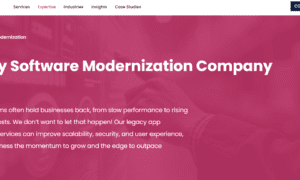As a CEO in today’s tech landscape, you don’t just lead a company; you command a high-stakes race for intellectual capital. While your board focuses on revenue and your CTO on the product roadmap, your greatest vulnerability—and your most potent untapped opportunity—often lies in a function you might have delegated to HR: global talent acquisition and immigration.
In 2025, viewing UK immigration as a mere administrative hurdle is a critical strategic error. It’s the operational drag that causes you to lose a unicorn engineer to a Berlin startup or delays the deployment of your star hire by a critical quarter. The modern CEO must reframe immigration not as a cost centre, but as a strategic enabler of “Immigration Velocity”—the speed and certainty with which you can onboard the world’s best talent.
This guide moves beyond the basics. It provides a strategic framework for transforming your immigration process from a bureaucratic bottleneck into a powerful engine for growth and a distinct competitive advantage.
The 2025 Immigration Matrix: Beyond the Obvious Pathways
Understanding the rules is entry-level; mastering their strategic application is the CEO’s role. The UK’s immigration system is a matrix of opportunities and risks.
1) The Skilled Worker Visa: More Than Just a Salary Game This route is your primary tool, but its mastery lies in the details:
- Strategic Salary Benchmarking: The £38,700 threshold is just the start. The real challenge is aligning your compensation with the “going rate” for hyper-specific roles. A seasoned legal partner doesn’t just check a box; they use salary data strategically to position your offer as both compliant and compelling, potentially reducing the risk of a subjective refusal on “genuineness” grounds.
- The Sponsor Licence as a Core Business Asset: Treat your Sponsor Licence with the same reverence as your most valuable IP. In 2025, Home Office digital audits are increasingly sophisticated, using data analytics to flag compliance anomalies. Your licence isn’t just permission to hire; it’s a reflection of your company’s operational integrity. Its loss is not an HR issue; it’s a catastrophic business failure.
- Occupation Codes as Strategic Levers: An “IT Business Analyst” versus a “Systems Designer” isn’t just semantics; it’s a strategic choice with different salary implications and available talent pools. Expert guidance allows you to legally and ethically map your role to the most advantageous code, optimising both cost and compliance.
2) The Elite Routes: Your ‘Unfair’ Advantage in Talent Wars For the top 1% of talent, a standard process is a deterrent.
- The Global Talent Visa as a Recruitment Tool: Don’t wait for a candidate to ask. Proactively identifying that a target hire qualifies for the Global Talent route and offering to manage their endorsement application is a power move. It demonstrates that you recognise their elite status and removes the sponsorship burden from your company.
- The Innovator Founder Visa for Strategic Expansion: This isn’t just for new startups. Are you planning a UK-based R&D spin-out or acquiring a team with entrepreneurial DNA? Using the Innovator Founder route to bring in a leadership team for a new venture is a sophisticated expansion strategy that few of your competitors will even consider.
The True Cost of Inaction: A CEO’s Risk Assessment
A DIY or amateur approach to immigration doesn’t just cost money; it costs momentum.
- Financial Haemorrhage Beyond Fees: The Immigration Skills Charge (ISC) and legal fees are predictable costs. The unpredictable costs are what cripple you: productivity loss from a vacant leadership role, the cost of re-recruiting after a refusal, and the significant financial exposure if a Home Office audit uncovers systemic failures. In the most severe cases, where an appeal is necessary, you don’t just need a lawyer; you need a surgeon. The decision to Book a Barrister for an Immigration Hearing becomes a mission-critical investment to salvage a vital hire or defend your company’s reputation.
- Operational Drag and Market Delay: Every week a visa is delayed is a week your product roadmap slips. It’s a week your competitor gains ground. Quantify this delay in terms of lost revenue or market share, and the ROI on expert legal partnership becomes immediately apparent.
- Erosion of Employer Brand Magnetism: Top-tier talent talks. A chaotic, opaque immigration experience travels fast. Conversely, a seamless, ‘white-glove’ process becomes a core part of your employer value proposition, making it easier to attract the next star hire.
Building Your Immigration Flywheel: A Blueprint for Dominance
Turning immigration into a competitive advantage requires a systems-thinking approach. Your goal is to create a frictionless “flywheel” that gains momentum with each successful hire.
1) Strategic Partnership over Transactional Service Your first move is to stop thinking about legal help on a case-by-case basis. An online search for an “immigration lawyer near me” yields transactional vendors. You need a strategic partner who understands your business goals and growth trajectory. They don’t just process visas; they build a scalable immigration platform for your company.
2) The “White-Glove” Onboarding Experience The world’s best talent expects a world-class experience. This means extending support beyond the primary visa. A top-tier legal partner manages the entire family’s relocation journey. Their ability to expertly navigate the process to apply for a UK spouse visa for a key hire’s partner is not a courtesy; it is a crucial closing tool in your recruitment arsenal. It signals that you care for the whole person, not just the employee.
3) Compliance as a Service (CaaS): The Tech-Driven Approach Your legal partner should operate like a modern CaaS provider. They should integrate with your HR tech stack, implement automated compliance reminders, and provide you with data-driven insights—such as average processing times for certain roles or visa types—allowing you to plan your recruitment pipeline with greater predictability.
4) Future-Proofing and Predictive Intelligence The best legal partners don’t just react to today’s laws; they anticipate tomorrow’s changes. They should be providing you with intelligence briefings on proposed legislative shifts, helping you model the potential impact on your hiring strategy and budget months in advance.
Conclusion: Your Strategic Choice—Acceleration or Inertia
As CEO, you are constantly making choices that determine your company’s trajectory. Your approach to immigration is one of these pivotal decisions. You can continue to view it as a reactive, low-priority function and accept the associated friction, risk, and delays as the cost of doing business.
Or, you can recognise it for what it is: a strategic lever for competitive advantage. By partnering with experts who can build a robust, predictable, and scalable immigration flywheel, you transform a source of inertia into a powerful accelerator. You give your company the ability to acquire the best global talent faster and more reliably than your rivals. In the end, the company with the best people wins. The choice is yours.



































